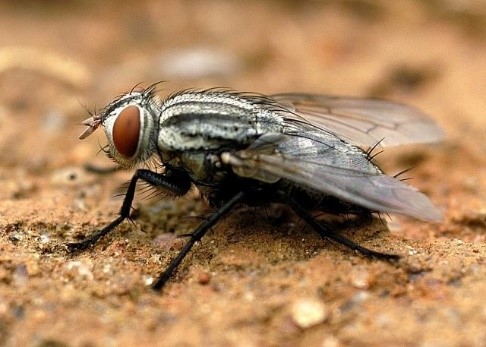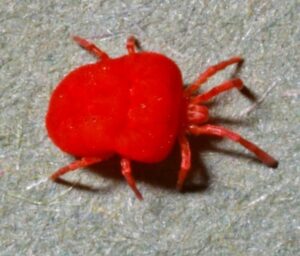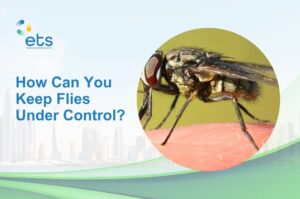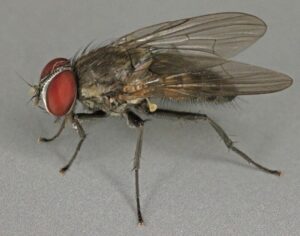Flesh Fly:
General Description
|
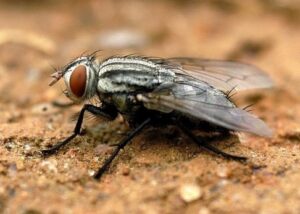
Credit: Saleem Hameed |
- The mouth parts are of the licking type.
- The veining of the wings is similar to that of the house fly.
- The eyes are red in color.
- On the abdomen there are greenish or silver spots that differ in appearance depending on the light reflections on them. The end of the abdomen in the male is brown.
Life Cycle and Common Characteristics
- Flesh flies are ovoviviparous (the larvae hatch inside of their mother’s “uterus” and are held until a proper host is found).
- The eggs undergo full development and hatch within the
- The female deposits the 1st instar larvae
- Within 5 days, the larvae will be in their 3rd instar and be near to
- The larvae leave the host to find a suitable location to pupate.
- Pupation starts one week after the larvae find the new location.
- Adults emerge after 10
- These flies depend on live or dead tissue to complete their life
- Flesh flies are often very numerous in populated areas, but seldom enter houses or food-handling establishments in significant numbers.
- Females of many species lay living larvae on meat scraps, decayed flesh, or on dog excrement.
Damage and Medical Implications
- Some flesh fly species are parasitoids, while most have been found on different types of carrion it is known as a carrion-inhabiting species, and they have been reported to cause myiasis in It also has a significant impact in other areas of science including parasitology and forensic entomology
- Flesh flies occur in places not suitable for most They are closely associated with humans (synanthropic) and they have been known to enter houses to colonize dead bodies.
- This family of flies is attracted to many types of dead vertebrate remains, including
- Myiasis is caused by the larvae of necrophagous flies (including flesh flies, blow flies, and screw flies) invading the organs and tissues of warm-blooded vertebrate animals and
- Those parasites larvae mainly stayed in the mouth, eyes, nose, subcutaneous tissues, skin, stomach, intestines, urinogenital system, ears, and other soft tissues of the
- In addition to the medical importance of flesh flies also known as mechanical vectors of parasitic disease agents, they can cause myiasis in the hospital environment which are also called nosocomial myiasis, and can be considered an indicator of wound care neglect, either by the nurses or by oneself.
- Flesh flies are important due to their strong adhesion to humans and may cause intestinal stigmatization, as well as staging injuries to animals.

